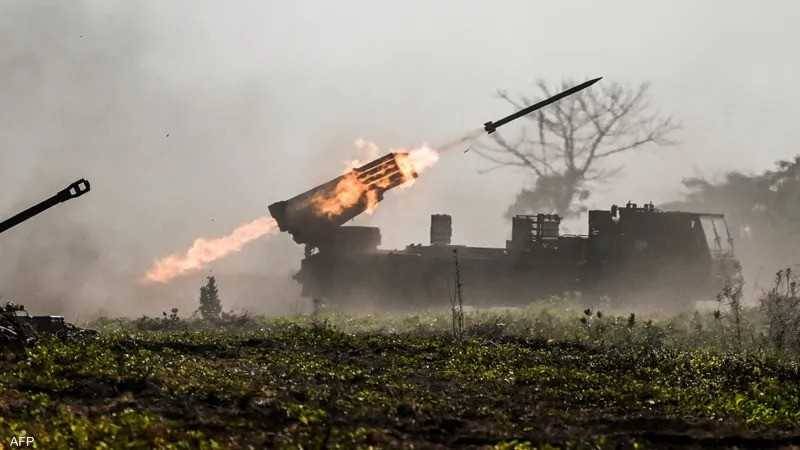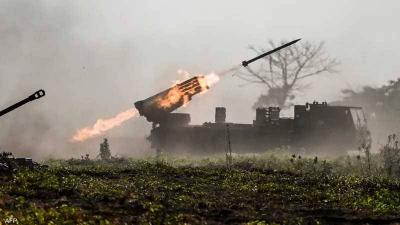Hezbollah and Israel exchanged threats on Tuesday about escalating the ongoing war in southern Lebanon, in light of the reported increase in attacks over the past month and the operations carried out by both sides, which exceeded two thousand military operations by the party. Meanwhile, Israel announced that it had executed one hundred strikes against its fighters and leaders. With fires continuing to blaze in 15 locations in northern Israel as a result of Hezbollah rockets, alongside other fires in Lebanon caused by phosphorus and illuminating shells launched by the Israeli army, Israeli war minister Itamar Ben Gvir called for war on Lebanon, urging the burning and destruction of all Hezbollah strongholds following his visit to Kiryat Shmona, according to Israeli media as reported by "Asharq Al-Awsat."
In response, Hezbollah's Deputy Secretary-General Sheikh Naeem Qassem stated that the party is prepared for high escalation, even if it leads to an all-out war, to make the enemy understand that it cannot threaten them; they are ready for that, which deters the enemy from further escalation. Hezbollah's Executive Council Deputy Chief Sheikh Ali Dammoush was more explicit, stating that if the enemy threatens and showcases readiness for wide-ranging aggression against Lebanon, the resistance has prepared for all scenarios and is fully ready to confront all possibilities.
**Targeted Operations by the Numbers**
Both sides bolster their threats with figures they disclosed. Hezbollah announced conducting two thousand military operations since the war began on October 8, stating that the rockets and drones launched targeted vital infrastructures. On the other hand, the Israeli army announced on Tuesday that its forces had executed one hundred targeted assassinations of Hezbollah members based on intelligence gathered by the 869 reconnaissance unit of the 91st Galilee Brigade, which is responsible for multidimensional intelligence collection in the Lebanese border area. The army stated that the unit worked intensively on gathering intelligence and identifying Hezbollah personnel, ultimately leading to their precise eliminations.
Hezbollah acknowledged on Monday and Tuesday that Israelis had assassinated two of its members in Naqoura and Al-Zarariyah, noting that the number of its fighters killed since the start of the war has reached 321. Additionally, an Israeli strike targeted a vehicle between Bani Hamr and Labaya in western Bekaa, resulting in two injuries.
**1000 Rockets and 90 Drones**
Indicating the recent escalation, Israeli media reported that the Israel Security Agency (Shabak) stated that last May saw a sharp rise in the number of missile and rocket attacks toward targets in Israel from Lebanon. The Israeli army radio reported on Tuesday that Israel was targeted by approximately 1000 rockets and shells launched from Lebanon and Syria, marking the highest total since the onset of these continuous border confrontations, noting that April saw about 744 rockets launched, and 334 in January. Shabak data confirmed a sharp upward trend in border confrontations, with 90 drone launches from Lebanon recorded in May, also a record count, and attacks have increasingly targeted deeper sites within Israel.
On Tuesday, Hezbollah announced targeting the Hermon 810 Brigade at the Israeli Me'lay Golan military station in the occupied Syrian Golan with a swarm of kamikaze drones.
**Continuous Fires**
The escalation extended to the fires raging along both sides of the border. The Israeli army reported that six of its personnel were injured as they participated in efforts to extinguish extensive fires that erupted in dozens of sites in the northern region due to rocket shells fired by Hezbollah. The fires included about 15 locations, including Kiryat Shmona, while Israeli estimates indicated that fires engulfed dozens of dunams in the occupied Golan Heights, according to "Asharq Al-Awsat."
The Israeli army stated that its troops are involved in firefighting efforts in the north, indicating that a situation assessment was carried out to allocate additional resources, units, and firefighting capacities for the efforts to extinguish fires in the north.
In Lebanon, fires resumed as the area between the towns of Markaba and Halta was subjected to phosphorus bombardment. It was reported that two army personnel suffered from suffocation due to inhaling phosphorus material because of the fire that reached near an army center in Markaba. Moreover, the Israeli army launched incendiary shells overnight at the forests adjacent to the Blue Line at the outskirts of the towns of Naqoura, Jebel Labouna, Alama Al-Shaab, and Al-Bustan. Images from Lebanon showed vast areas of trees burning in Alama Al-Shaab. Additionally, the outskirts of the town of Deir Mimmas, along the banks of the Litani River, were hit with a barrage of Israeli cluster shells intended to ignite fires, as reported by the National News Agency.




